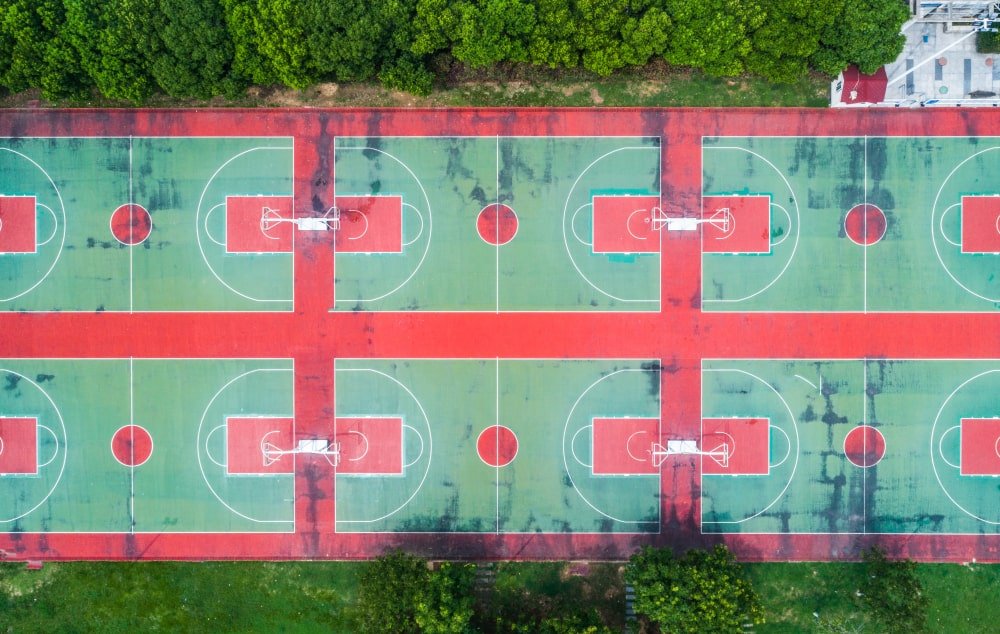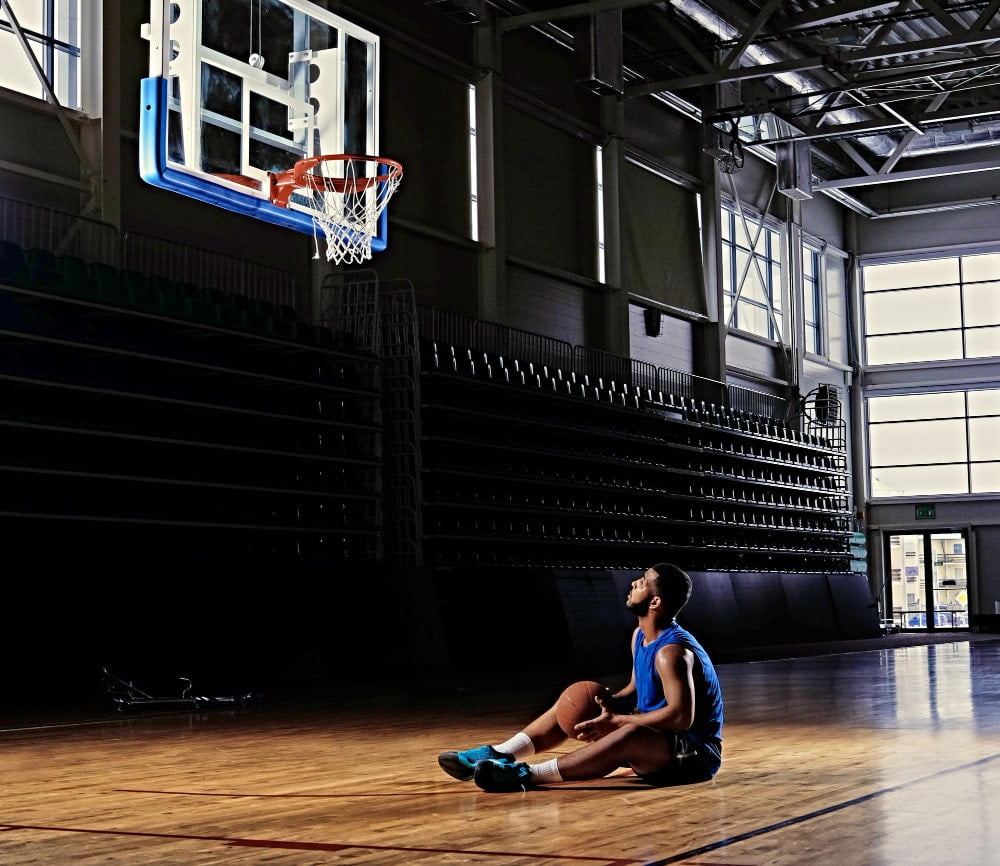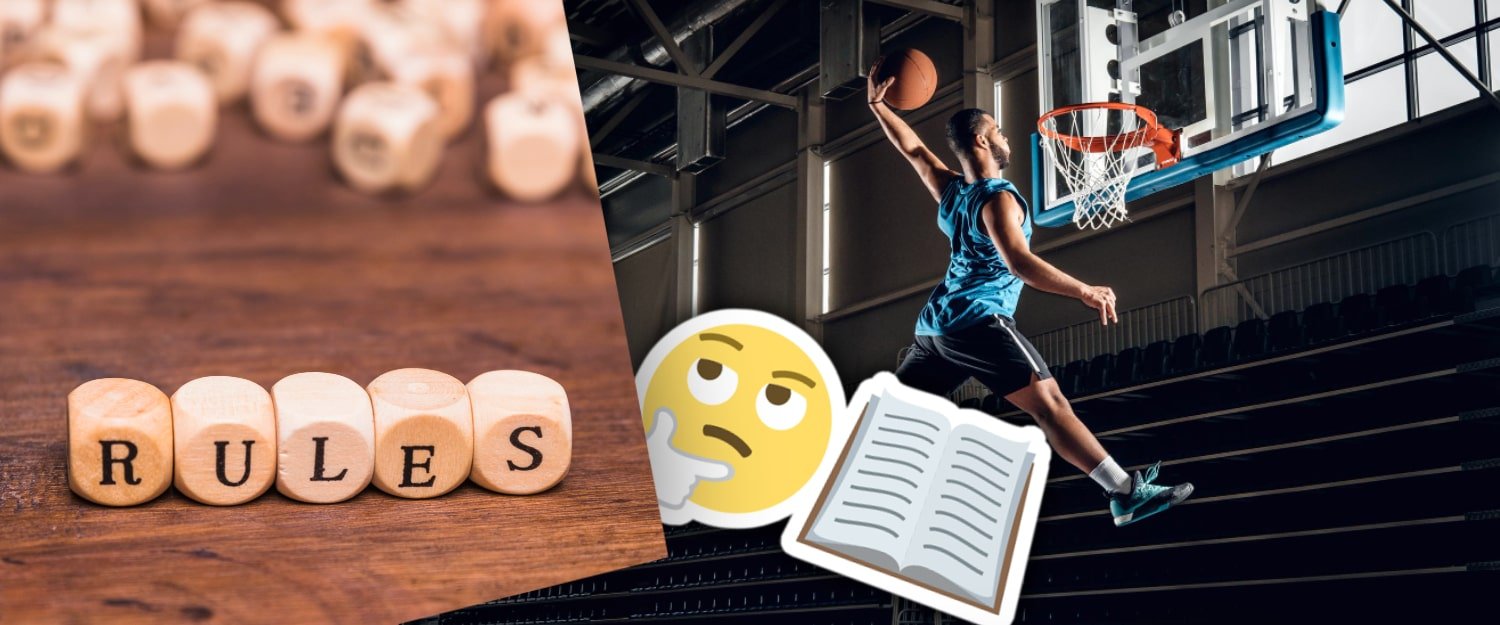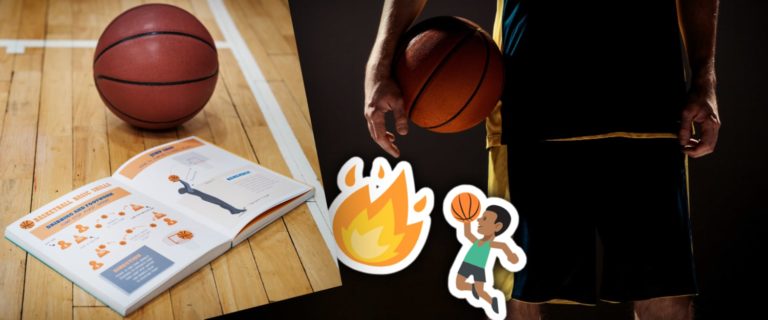The Basic Basketball Rules: 2023 Updated
There are numerous basic basketball rules that all players should understand before taking the court. We will outline the most common rules and explain what they mean for you as a player in this blog post.
Whether you’re a novice or a seasoned player, it’s important to understand all of the game’s rules. So, without further ado, let us begin!
What are the Rules of Basketball?
Basketball‘s fundamental rules are straightforward and simple to grasp. However, because there are numerous variations of the game that can be played, it is critical to understand which rules apply to which situation.
Here are the most common basic rules of basketball:

Five Players per Team on the Court
At any given time, each team may have a maximum of five players on the court. A penalty will be assessed if a team has more than five players on the court.
Outscore your Opponent for a Win
The goal of the game is to outscore your opponent. This can be accomplished by driving to the basket, making free throws, or adding points for other offensive plays. The winning team will be the one with the most points at the end of the game.
If there is a tie at the conclusion of regulation time, extra time will be played until one team’s score exceeds the other.
Dribble the Ball to Advance it
The ball can be moved up the court by dribbling, which is when a player bounces the ball on the ground while they are moving. A player can only take one dribble before they must either pass the ball or shoot it.
A player that dribbles more than once (picks the ball up and dribbles again) will be flagged for a violation and lose control of the ball.
In addition, players can move around the court without dribbling or passing the ball. They can walk or run, but they can’t stop and start again without first picking up their dribble.
Ball and Ballhandler Must Remain within Court Lines
The ball and the player who is in possession of it must always stay within the court’s boundaries. If either one of them goes out of bounds, their team loses possession of the ball.
Eyes on the Shot Clock!
Each team has a set amount of time to score before the shot clock runs out. If the team does not shoot the ball within that time frame, they will lose possession of the ball.
The shot clock typically begins at 24 seconds, but this can vary depending on the league or competition.
If a team scores, the shot clock resets and they have another 24 seconds to score. If the opposing team gains possession of the ball before the shot clock expires, they will have 24 seconds to score as well.
If an offensive team takes a shot and misses, but gets their own offensive rebounds, the shot clock will reset at 14 seconds.
Five Seconds to Inbound the Ball
The ball must be passed inbounds within five seconds of a team scoring. If they do not, the team will lose possession of the ball.
An inbound is when the ball is passed from one player on the same team to another. The inbounder is the player who passes the ball and must be behind the court line when they make the pass.
The receiver must be inside anywhere on the court’s perimeter lines.
Blocking or Stealing the Ball
Defensive players are permitted to block or steal the ball from the offensive team.
A block occurs when a defender tries to stop the ball with their hand to prevent it from passing through the basket. A steal occurs when a defender steals the ball from an offensive player.
Blocks and steals can be used to help your team prevent the opposing team from scoring or from gaining possession of the ball.
Players must be careful as attempting to block or steal means also more chances of earning a foul.
Goaltending
A player cannot stop a shot that is falling toward the basket. If they do, it is considered goaltending, and the shot counts even if it’s missed.
When a defensive player interferes with a shot on its way to the basket, this is referred to as goaltending. This can be accomplished by blocking the shot, touching the ball before it enters the basket, or grabbing the basket’s rim.
If a player goaltends, his or her team loses possession of the ball, and their opponent is awarded two free throws.
Free throws are worth one point each and must be taken from 15 feet behind the free-throw line.

Leave the Paint in Three Seconds!
When on offense, each player is allowed three seconds in the paint. The paint is the area inside the foul line that extends all the way to the end of the court. A defensive three-second violation will be called if an offensive player stays in the paint for more than three seconds.
This rule is in place to prevent offensive players from camping out under the basket and making it difficult for them to score. If a team violates the three-second rule, their opponent is awarded the possession.
Illegal Contact result into Personal Fouls
While the ball is in play, players are not permitted to make physical contact with one another. Grabbing, holding, pushing, or hitting another player is an example of this. If a player makes physical contact with another player, it is a personal foul.
Both offensive and defensive players can be called for personal fouls. If an offensive player commits a personal foul, their team will lose possession of the ball.
If a defensive player commits a personal foul, the offensive team will be inbounding the ball again or awarded with one or two free throws depending on the situation and the kind of foul.
A personal foul can also result in ejection from the game in some cases. This usually occurs when a player makes contact with another player in a dangerous or unsportsmanlike manner.
Excessive Contact result into Flagrant Fouls
A flagrant foul is defined as a personal foul that is deemed excessive or unnecessary. Hitting, kicking, or punching another player is an example of this. Flagrant fouls frequently result in the ejection of the offending player.
A flagrant foul can also result in a player suspension in some cases. This is usually the case if a player has committed multiple flagrant fouls during a game or season, or if their actions are deemed particularly dangerous.
Charges & Illegal Screens
A charge occurs when an offensive player collides with a defensive player who has taken a position. The offensive player has committed a personal foul.
An illegal screen occurs when an offensive player sets a screen (a block) on a stationary defender. This is also a personal foul on the offensive player’s part.
Both charges and illegal screens are personal fouls that cause the offensive team to lose possession of the ball.
Other Rule Violations resulting in Technical Fouls
There are a few other violations that can result in a technical foul. These include:
- Kneeling to dribble the ball
- Hanging from the basket’s rim
- Using expletives
- Arguing with the referee
Technical fouls are typically assessed to players who violate minor rules. They are also given to players who demonstrate poor sportsmanship or who argue with the officials.
A technical foul earns the opposing team one free throw. After receiving two technical fouls, a player may be ejected from the game in some cases.
All Teams are Allowed a Certain Number of Fouls
Each team is allowed a certain number of fouls before they are disqualified from the game. This number varies depending on the league or competition but is typically five per quarter.
Each team is allowed a certain number of fouls before being kicked out of the game. This number varies by league or competition, but it is usually five per quarter.
A foul is when a player commits an illegal action while the ball is in play. Some common fouls include:
- Hitting another player
- Blocking or stealing the ball from another player
- Grabbing or holding another player
- Pushing or shoving another player
If a team reaches its foul limit, their opponent will be awarded free throws for each subsequent foul committed. The opposing team may also be given possession of the ball in some cases.

Conclusion
These are just a few of the fundamental basketball rules that you must understand in order to play the game. Of course, there are many more specific rules that apply to various situations.
However, knowing these fundamental rules will provide you with a solid foundation upon which to build your basketball knowledge. Thank you for taking the time to read this! We hope you found this information useful.
Do you have any questions about basketball’s fundamental rules? Please let us know in the comments!








